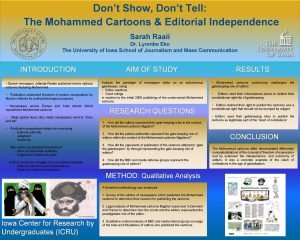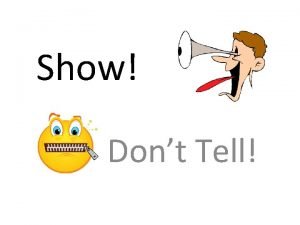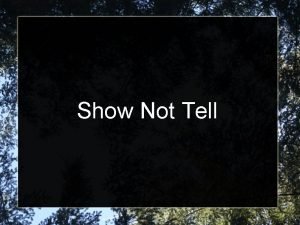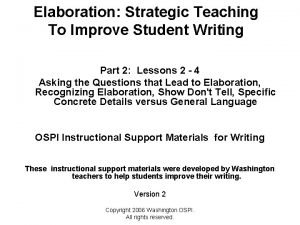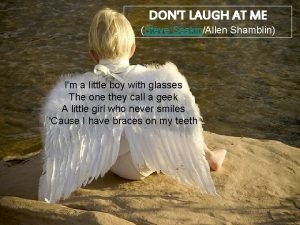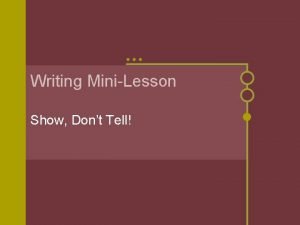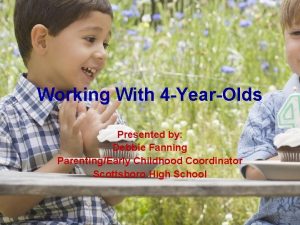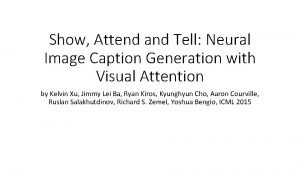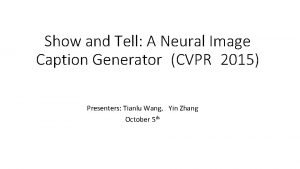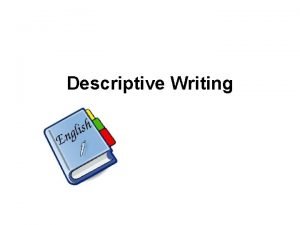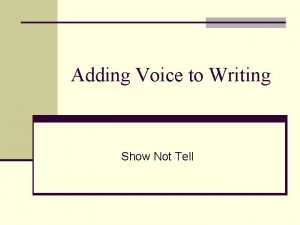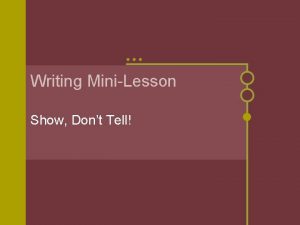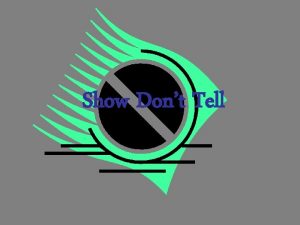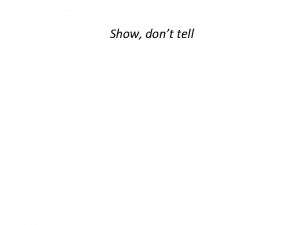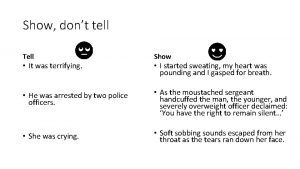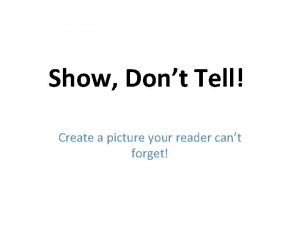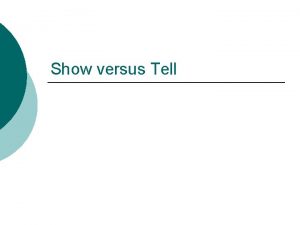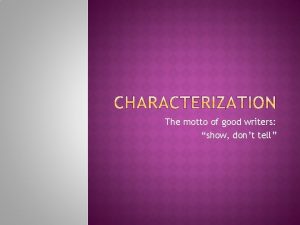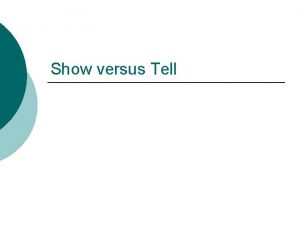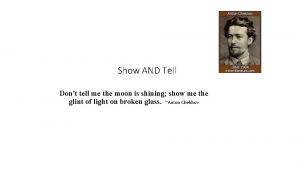Show Dont Tell Minilesson Writers Section Date in














- Slides: 14

Show, Don’t Tell! Mini-lesson Writer’s Section, Date in upper right hand corner

Which of these would you rather read? • I could hardly wait until my mom came home from the hospital with the new baby. The baby was cute. • OR….

This one? • Melissa has big blue eyes, straight black hair, and soft skin. She has red cheeks, too. Her fingers and toes are tiny, and her clothes aren’t much bigger than an American Doll’s.

What about this one? • Please shut your eyes while I read this sentence to you: • Mavis was angry when she heard what the umpire said. • What does that look like?

Now? • Please shut your eyes again and listen to this sentence: • Shaking her head back and forth, Mavis pounded home plate with her fist after the umpire shouted, “You’re out!” • Now what picture do you have in your head?

Which is better? • Jack was afraid. • OR… • As the footsteps tapped closer and closer, Jack felt his stomach muscles tighten. He flattened himself to the wall, the gritty bricks against his cheek. Sweat chilled his palms. He used both hands to steady the gun.

What is telling? • Telling gives us information, but it may not be specific enough to create a detailed picture in the reader’s mind. • Telling does communicate facts, but does not involve the reader in the story. • If you tell, your reader may lose interest.

What is showing? • Showing sentences allow the reader to envision the story. • The reader is able to create clear, strong pictures in their mind. • The reader can experience the story as if they were living the story.

How can we, as writers, SHOW? • Strategies writers use to SHOW what is happening include: • describing the character’s actions rather than just saying how he or she feels. • • using action verbs. using similes and metaphors. using dialogue. Appealing to some of the five senses to paint a picture of what is happening or the scene.

You try • The girl cried a lot. • Describe the picture that this sentence paints in your mind. • What words could we use instead of girl? What are more specific words that mean cry? • How else can we say a lot?

An example • Example: The teenager threw herself on her bed and sobbed into her pillow until she fell asleep.

You try it, again • The pizza was delicious. • How could we SHOW that the pizza was delicious?

An example • Mushrooms and pepperoni were layered thickly on top of one another, while the white mozzarella cheese bubbled over the bright red tomato sauce.

• DRAW the readers in; MAKE them a part of what is happening. SHOW the scene, GET them involved, GIVE it a dramatic impact. SHOW them what’s happening now or how things happened by painting your narrative with words. USE figurative language, dialogue, and descriptive words.
 Dont ask dont tell political cartoon
Dont ask dont tell political cartoon Show not tell for excited
Show not tell for excited Show not tell feelings
Show not tell feelings Show don't tell examples
Show don't tell examples Dont laugh at me dont call me names
Dont laugh at me dont call me names Record date dividends
Record date dividends Dividend ex date
Dividend ex date Tell me what you eat and i shall tell you what you are
Tell me what you eat and i shall tell you what you are Show don't tell
Show don't tell Show and tell letter l
Show and tell letter l Show attend and tell
Show attend and tell Show not tell generator
Show not tell generator Descriptive writing clipart
Descriptive writing clipart Show not tell in writing
Show not tell in writing Show and tell konseling
Show and tell konseling
